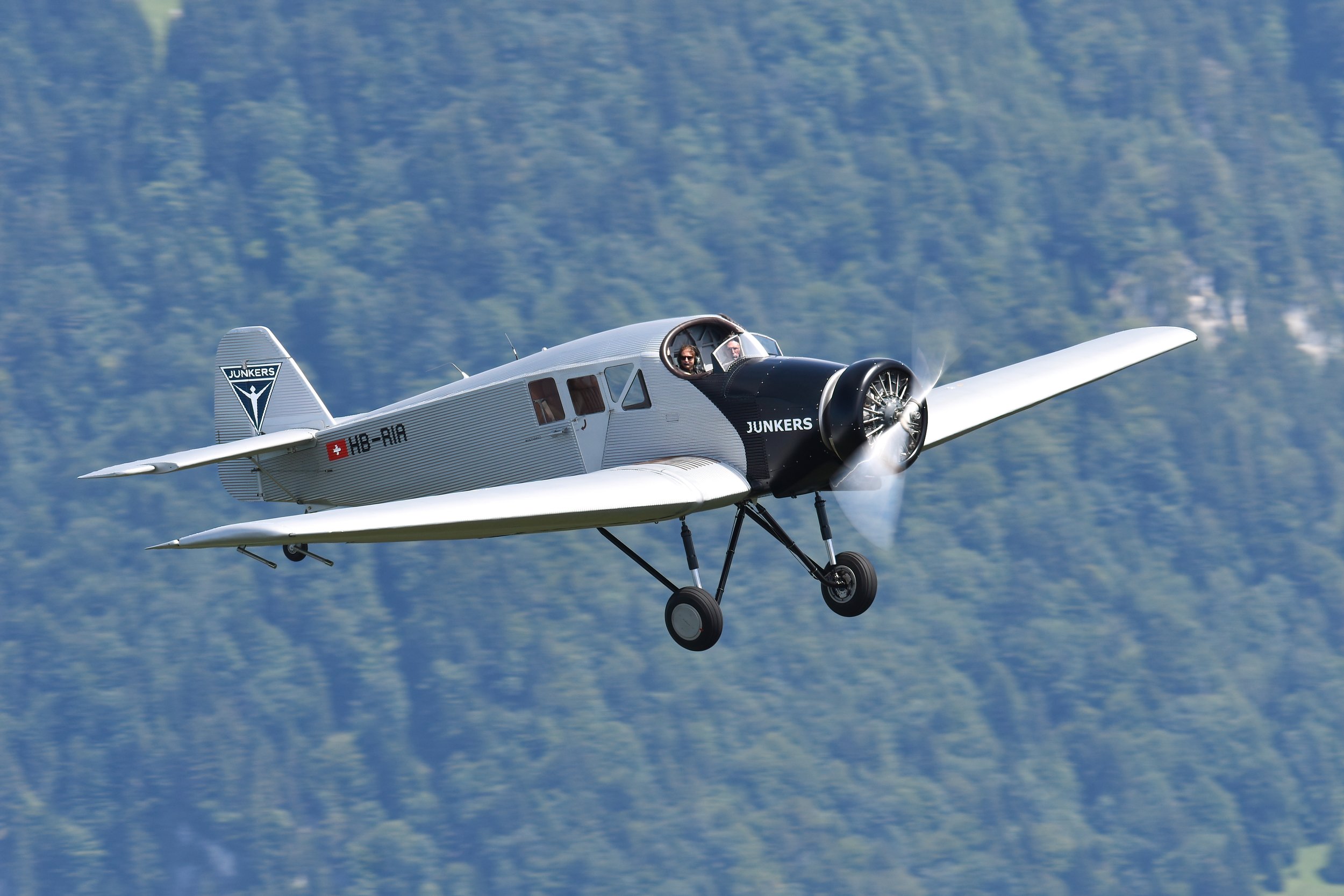
June 25 / Junkers F 13 first flight
First Flight 25 June 1919
Junkers F 13
The Junkers F 13, a groundbreaking aircraft in aviation history, was the world’s first all-metal commercial transport aircraft. Designed by German engineer Hugo Junkers and produced by Junkers Flugzeugwerke AG, the F 13 revolutionized aircraft design and set new standards for safety, efficiency, and performance.
Origins and Development:
The development of the Junkers F 13 began in the aftermath of World War I when Hugo Junkers sought to apply his expertise in metal construction to commercial aviation. The F 13 was designed to address the limitations of existing wooden aircraft, offering superior durability, strength, and aerodynamic efficiency.
Innovative Design Features:
The Junkers F 13 featured a monoplane configuration with a cantilever wing design, an enclosed cabin for passengers, and a corrugated metal skin that provided structural integrity and reduced weight. The all-metal construction of the aircraft was a pioneering achievement that set it apart from contemporary biplanes and wooden aircraft.
First Flight and Introduction:
On June 25, 1919, the Junkers F 13 made its maiden flight, marking a historic moment in aviation as the first all-metal aircraft to take to the skies. The aircraft’s successful performance during flight tests led to its commercial introduction in 1920, capturing the attention of airlines, governments, and aviation enthusiasts worldwide.
Commercial Success and Expansion:
The Junkers F 13 quickly gained popularity for its reliability, performance, and passenger comfort, becoming a preferred choice for commercial air travel. Airlines across Europe, the Americas, and Asia adopted the F 13 for passenger and mail transport, expanding air routes and connecting distant regions in a time of rapid aviation growth.
Technical Advancements:
The Junkers F 13 introduced several technical innovations that set new standards in aircraft design. These included an enclosed and heated cabin for passenger comfort, advanced instrumentation for navigation and flight control, and a streamlined fuselage that reduced drag and improved aerodynamic efficiency.
Global Influence and Legacy:
The success of the Junkers F 13 had a lasting impact on the aviation industry, influencing the design of future aircraft and shaping the course of commercial aviation. The aircraft’s all-metal construction, innovative features, and operational reliability set a precedent for modern airliners and contributed to the evolution of aviation technology.
Production and Variants:
Junkers produced approximately 330 F 13 aircraft between 1919 and 1932, with variants including floatplane and military versions. The F 13’s versatility and adaptability to different mission requirements further showcased its capabilities and solidified its reputation as a pioneering aircraft in aviation history.
Enduring Significance:
While production of the Junkers F 13 eventually ceased, its legacy endures as a symbol of innovation, progress, and excellence in aviation. The F 13’s impact on aircraft design, manufacturing techniques, and commercial air transport continues to inspire future generations of engineers, designers, and aviation enthusiasts to push the boundaries of what is possible in aviation technology.
Junkers F 13 Facts
Revolutionary Design: The Junkers F 13 was the world’s first all-metal commercial aircraft, breaking away from traditional wooden construction methods and setting new standards in aviation design.
Corrugated Metal Skin: Unlike its contemporaries, the F 13 featured a distinctive corrugated metal skin, which not only provided structural strength but also contributed to its iconic appearance.
Monoplane Configuration: The F 13’s monoplane design was ahead of its time, offering improved aerodynamic efficiency and performance compared to the biplanes of that era.
Enclosed Passenger Cabin: One of the F 13’s innovative features was its enclosed passenger cabin, providing a more comfortable and safer flying experience for travelers.
Global Reach: The F 13 quickly gained popularity worldwide and was operated by airlines and governments in Europe, the Americas, and Asia, showcasing its versatility and reliability.
Military Service: In addition to its commercial success, the F 13 also served in military roles, including reconnaissance and transport missions during conflicts such as World War I.
Record-Breaking Flights: The F 13 set several aviation records, including speed and altitude achievements, demonstrating its performance capabilities and reliability.
Influence on Aviation: The success of the F 13 had a lasting impact on aviation design and manufacturing, inspiring future generations of aircraft and shaping the evolution of commercial air travel.
Production Numbers: Approximately 330 F 13 aircraft were produced between 1919 and 1932, highlighting its popularity and longevity in the aviation industry.
Enduring Legacy: Despite ceasing production, the F 13’s legacy lives on as a symbol of innovation and progress in aviation history, continuing to inspire aviation enthusiasts and industry professionals worldwide.










